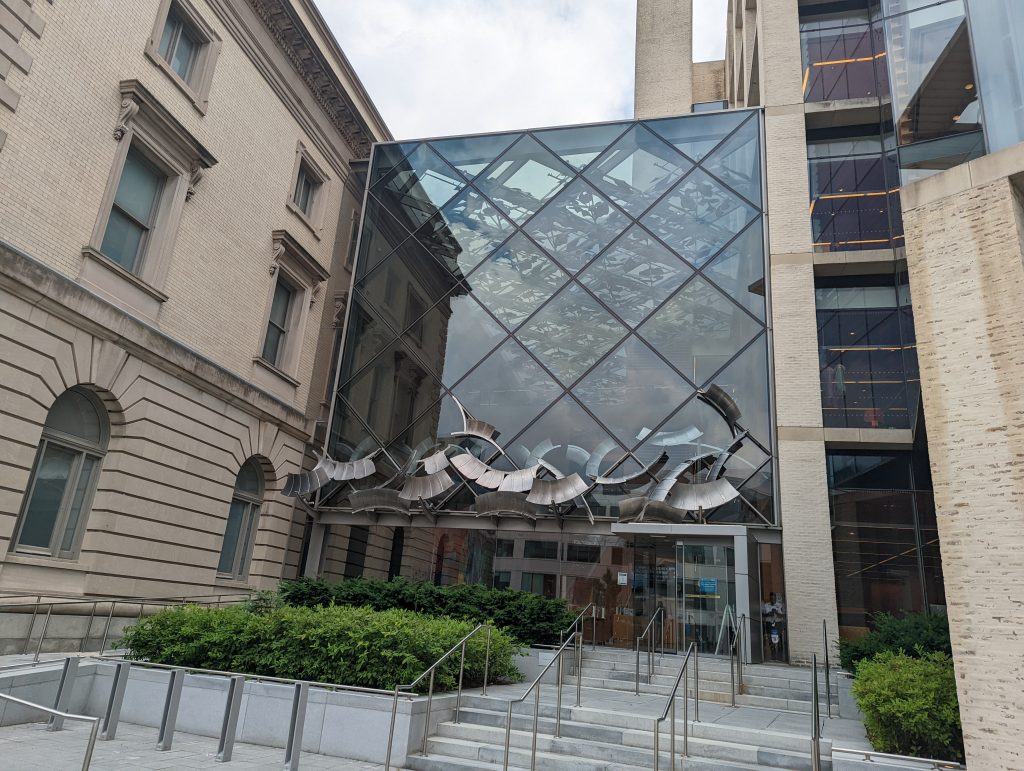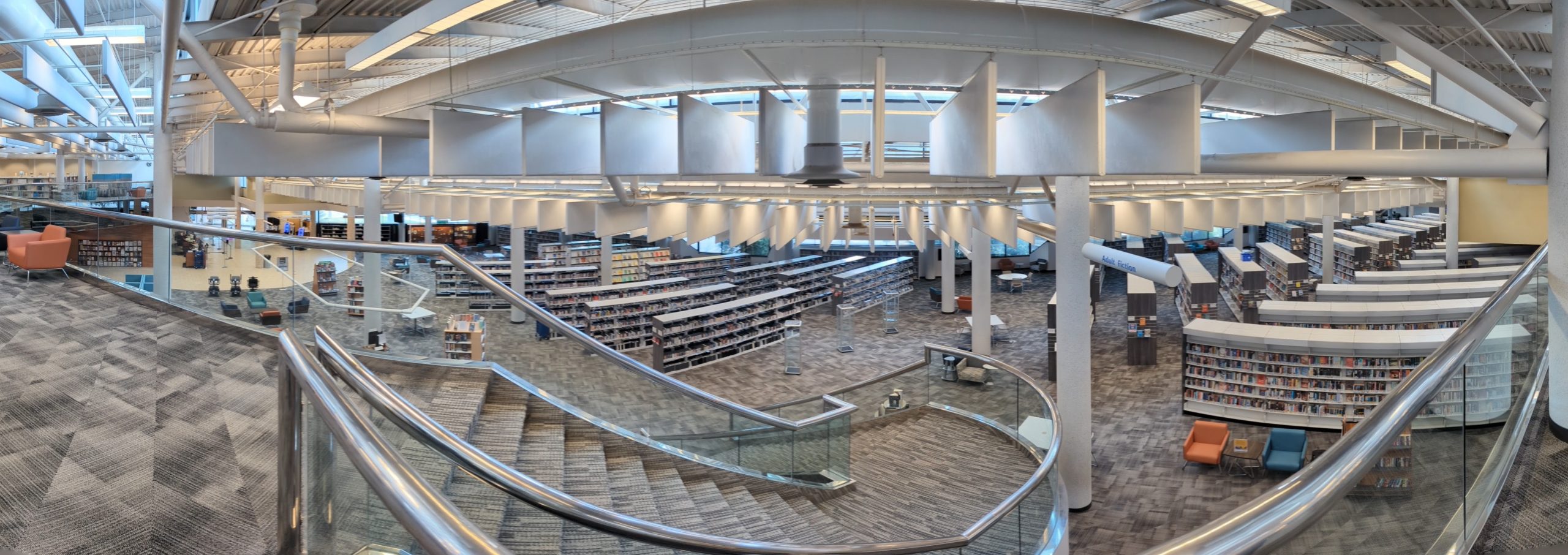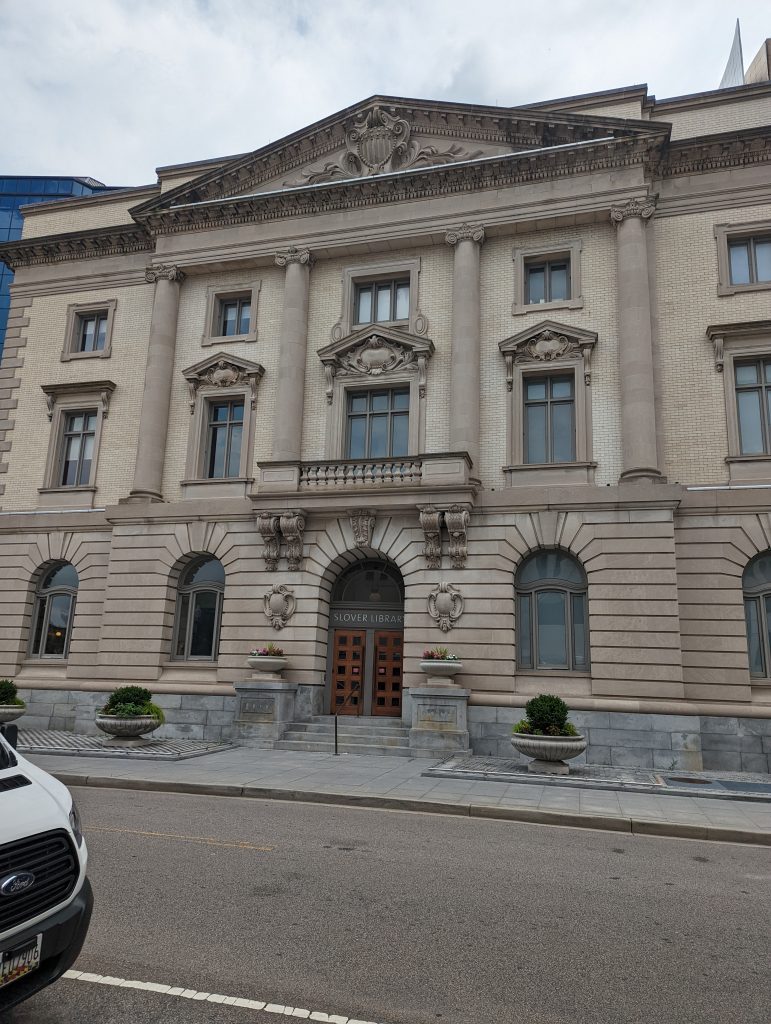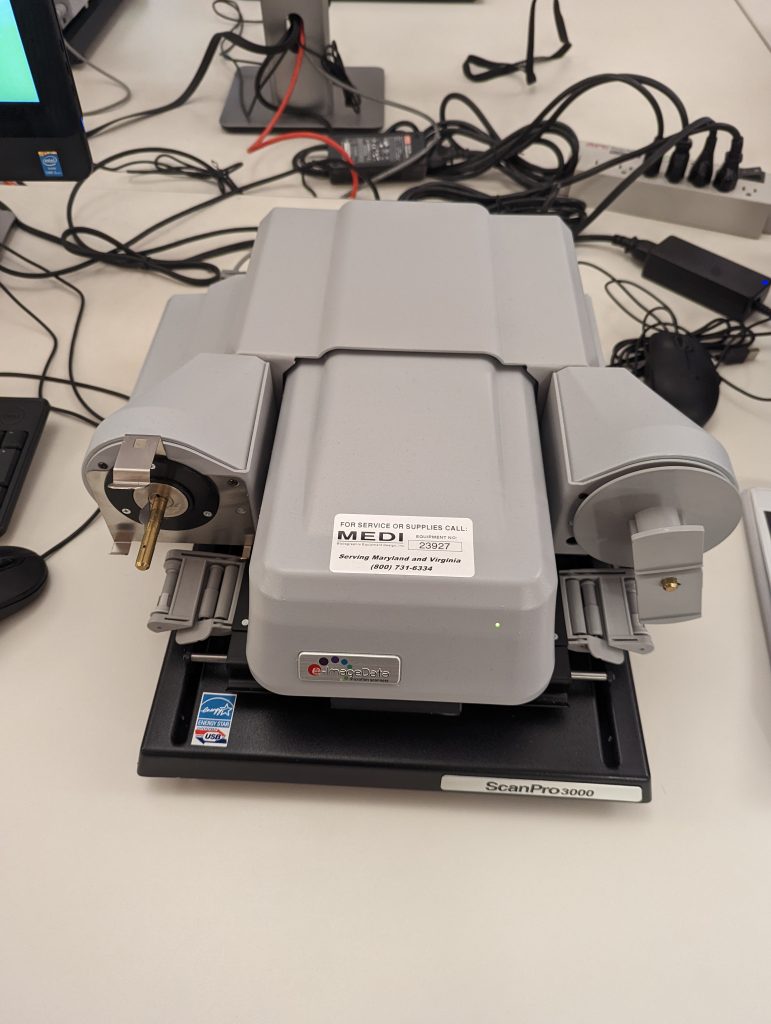The Space and Physical Access
The Sargeant Memorial Collection is a special local history and genealogy archive library that is located in Norfolk, VA. It is named after William H. Sargeant, the first librarian to be hired in the City of Norfolk in 1897 and the creator of the original archive (Norfolk Public Library, n.d.). The SMC is housed in one part on the Slover Library and is considered a branch of the Norfolk Public Library system while Slover is loose affiliate. When you first walk up to the library (and you will definitely be walking because there is no parking to speak of except in one of the many garages that are at least a block away) it’s actually the Sargent Memorial Collection (SMC) building that first draws the eye. As pictured above, it resembles a Carnegie library building of old and brings to mind what many people think of when they think library, however the entrance is actually tucked away beside it as you cannot access the building from its exterior.

To gain entry, you have to go up the stairs or accessibility ramp on the left, through the automated doors, past security, and through the lobby of the Slover Library itself. When you walk into the glass and chrome and LED-lit atrium of Slover, it brings to mind a shopping mall or hotel lobby more than a library. There are no books to be seen from the entrance. Stepping left into the SMC makes you feel like you are stepping back in time to an old 1970s era library. When you step into the half of the building housing the SMC, you are immediately met with traditional dark wooden shelving with inlaid yellow lights, a dark orange carpet, the typical fortress information desk, and ornate marble columns and ceilings peaking around the close together shelving. The first floor of the building actually houses Slover’s adult fiction collection with the SMC beginning on the second and extending to the third floor which is accessible by stairs and elevators. It feels both welcoming and familiar and cozy if you are like me and love the look and feel of old libraries, but it also can feel somewhat dark and intimidating compared to the bright shininess of Slover just a few feet behind you. One of the more interesting aspect of the SMC and Slover is that the staff offices are all visible from the public areas, they aren’t hidden away in a separate staff are like I’m used to with public libraries and this actually makes it feel like help is more accessible. Heading up to the second floor, the center is dominated by a large reading era that is brightly lit with sky lights from above, making a nice contrast with the surrounding galleries of bookshelves and digitization equipment. The reading area was actually very inviting when I visited, brightly lit by the sun with plenty of tables and a quiet atmosphere. It definitely made you want to whisper, again like a more stereotypical traditional library. On the second and third floor there are a few meeting areas, but most of the second floor is dominated by shelving and cabinets. The collection is home to nearly 25,000 books and other materials covering local history and genealogy primarily in Norfolk and Hampton Roads but also in some surrounding states such as North Carolina, West Virginia, and others (T. Valos, Personal communication, July 15, 2022). Books dominate the collection, with roughly 15,000 available and the rest in storage and they also house several historic artifacts and pictures, making the library seems half library, half museum (there is even and old card catalog index!).
One of the best features of the SMC is that a lot of the scanning and digitization equipment is actually kept out on the floor so staff can assist customers with big projects. While I was there, a staff members was doing their own digitization on the public computers where anyone could ask questions. While none of the items in the collection circulate, customers can use the tables and computers to review materials, make notes, and even digitize their own things. It functions much like an archive but with the additional access of different technology available to the public and genealogy resources. The space creates a sense of awe and reverence that a lot of people normally associate with libraries, but enough things are left out and open to the public that it makes you feel welcome to explore and ask questions.
People, Collections, and Services
The collections at the SMC varies greatly. While it is mostly books, the books range on a wide variety of topics with some amazingly rare gems. The oldest book in the collection dates back to 1585 and is written in Latin. One of the oldest local history books is a Pharmacy book from around 1605 and it is only one of three that can tell in the world. The librarians jokingly refer to the SMC as an unofficial “regional branch” of the Library of Virginia because the Library of Virginia works closely with them, referring patrons with questions about Norfolk and Hampton Roads. The Library of Virginia has a collection more focused on Richmond and Northern Virginia while the SMC has extensive local history about Hampton Roads that can’t be found anywhere else. In addition to the donations that come through, the SMC also has started to receive and preserve city documents from various departments. They essentially end up being a one stop shop for local history, genealogy, municipal records, and archival equipment access, much of which is accessible to the public in some way. They also serve as an affiliate of Family Search, they offer customers access to Ancestry and several other databases, and curate their own digital archive.
Primarily, the collections serves those doing genealogy and local history research. Their most popular request by far are from people looking for pictures or blueprints of historic neighborhoods and houses. Many people stop by trying to find out what their house looked like when it was first built since there are many older homes throughout Norfolk in particular. To date, the SMC staff are credited in over 150 books published by local authors about local history and genealogy and they attract a lot of researchers to their collection. They have also offered instructional programs for doing research in the past as well as handling reference questions, but they haven’t been able to do many program since the pandemic, mostly due to staffing. The collections, digitization, archiving, and customer service was originally handled by 16-17 staff when the SMC first moved to Slover in 2014 but now their staff has dwindled to 4 librarians and their hours have reduced as well. While they are slowly adding in more hours, they have not yet managed to secure more staff, but they still keep doing everything they can to keep the collection going and they still take reference requests as well. They have a good mix of materials that require staff assistance to access and materials that are out for the public to use.
Digital Access
The SMC website can be found at https://www.norfolkpubliclibrary.org/learning-research/local-history-genealogy/smc-collection. It is not an independent website but rather it exists as a page within the main Norfolk Public Library site that can be accessed either by hovering over “Learning and Research” and utilizing the links under “Local History and Genealogy” or by hovering over “About NPL” and selecting “Hours and Locations.” Although hover menus can be a barrier to access, clicking on these menu options does load a page that has the links present as well which accommodates anyone with mobility issues that might affect their ability to use a hover menu. The website is simple and informative as far as what the SMC is and what hours and events it is currently running, but it does not link directly to any of the digital resources. Those have to be accessed via a separate link under the “Local History and Genealogy” page which was a little confusing. However, the website is mostly text without a lot of distracting ads, pictures, or icons. This actually make it easier for anyone using a screen read to navigate the website. The lack of engaging images does make the website feel a bit clinical, but it is not unwelcoming and it easy to navigate, I especially appreciated the use of a san-serif font and a simple blue and green color scheme as it made it easy to read. While no staff are listed on the website, just a general email, the SMC does offer a transparent upfront at their rules and regulations for reference request and printing services so you know exactly what to expect before your reach out to the, which is very helpful. As I talked to the staff, the overwhelming impression I got was that the SMC and the staff are there to not only assist the aide local historian but to encourage the curiosity and information seeking habits of anyone looking for local history or genealogy materials. The staff were as excited as I was about the possibilities for research and preservation and learning that goes along with collecting the materials and histories and you can tell they are devoted to their collections and the duty as librarians and archivists. In contrast to the archive at my own library which is still small and finding its feet, the SMC is established enough where access, along with preservation, seems to have become their primary goal.
Other Thoughts
I was fascinated by the Sargeant Memorial Collection and ended spending for longer than just two hours there. One of the things I thought was most noteworthy was their complete willingness to make preservation technology so readily available to the public. You could also tell the despite the lack of staff, the librarians were very dedicated to keeping the collection going and providing access to these historical records, which as we have learned is a key part of user services (Rubin & Rubin, 2020). Despite the small numbers, they were actively adding open hours back into their schedule and still actively pursuing digitization. The sheer size of the collection was impressive as well and some of the rare books and local histories they had were absolutely fascinating, but best of all was how accessible they really tried to make everything. While I was there I actually got a sneak peek at some photos that were in the process of being digitized showing the Lesner Bridge are from over 70 years ago. As a 5th generation local growing up just around the corner from the Lesner Bridge, it was amazing to see these upcoming additions and I probably could have sat in that collection for hours poring over the maps and books and photograph they have of the cities I know so well. The staff were also very friendly and though only a few customers stopped by, they went out of their way to greet and talk to everyone who came in, well beyond just a typical “hi, let me know if you need anything” greeting. The Sargeant Memorial Collection is definitely aiming to be a go-to location for anyone interested in Norfolk and Hampton Roads history and they did a great job of creating a welcoming space by sprinkling in some of that old traditional library charm mixed with more modern services.
References
Norfolk Public Library. (n.d.). Sargeant Memorial Collection. https://www.norfolkpubliclibrary.org/learning-research/local-history-genealogy
Rubin, R. E., & Rubin, R. G. (2020). Foundations of library and information science (5th ed.). ALA Neal-Schuman.



I’m so glad you picked this library! I had no idea this was available and in the area. I like you was particularly interested in the archival equipment access they have for patrons. I’ve dabbled a fair bit in family history on both Ancestry and Family Search (even connected with my adopted father’s biological family that way). So I will definitely be checking into this more. But a 75%+ reduction in staff is insane! I hope they are able to recruit more staff to sustain this great resource.
I love this building. It’s very distinguished. This sounds like heaven for anyone interested in local history in the area. I like that they offer instructional sessions. That would be a good way to reach more people in the community.
It’s really nice that the scanning and digitization equipment is available for public use. That is a big change to go from 16-17 staff members to 4. The current staff must be extremely busy. For anyone interested in the history of that area, the library sounds like a must visit spot.
So pretty! I never got a chance to visit before moving out of Norfolk. The fact that the equipment is actually out on the floor is amazing! At the special library I went to there wasn’t really any except a copier/printer. It’s nice seeing libraries work with other libraries and actually makes since to have on library have NOVA history while another has southern Virginia history. What a challenge to go from 16 to 4 librarians!
The scanning and digitization equipment sounds very interesting, although I’m not 100% what that all involves. That would be interesting to learn more about. It sounds like that got your attention too. It’s cool you got to see old photos of the Lesner Bridge and learn more about its history while there. I liked your pictures too of the building, it looks pretty cool from the outside!